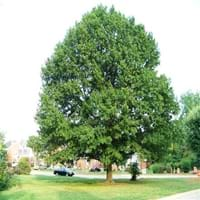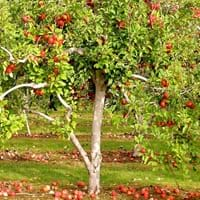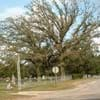Life Span
Perennial
Perennial
Type
Tree
Flowering Plants, Fruits, Trees
Origin
United States, Central United States
Central Asia
Types
Not Available
Aceymac apple, Bailey Sweet apple, Dabinett apple, Nehou apple
Number of Varieties
Not Available
Habitat
Woodland Garden Canopy
Hillside
USDA Hardiness Zone
5-8
5-8
Sunset Zone
Not Available
A1, A2, A3, 8, 9, 10, 11, 12, 13, 14, 15, 16, 17, 18, 19, 20, 21, 22, 23, 24
Habit
Spreading
Oval or Rounded
Flower Color
Yellow green, Chartreuse
White
Flower Color Modifier
Bicolor
Not Available
Fruit Color
Chocolate
Green, Red
Leaf Color in Spring
Green, Gray Green
Dark Green
Leaf Color in Summer
Gray Green, Dark Green
Green
Leaf Color in Fall
Yellow, Tan, Brown
Brown, Green, Light Yellow
Leaf Color in Winter
Not Available
Not Available
Leaf Shape
oblong or obovate
Oblong
Plant Season
Spring, Summer, Fall
Spring
Sunlight
Full Sun
Full Sun, Partial shade
Type of Soil
Clay, Loam
Loamy
The pH of Soil
Acidic, Neutral, Alkaline
Neutral
Soil Drainage
Well drained
Well drained
Bloom Time
Spring
Fall, Summer
Tolerances
Pollution, Drought
Drought
Where to Plant?
Ground
Ground
How to Plant?
Seedlings
Grafting, Seedlings, Transplanting
Plant Maintenance
Medium
Medium
Watering Requirements
Average Water Needs, Water during dry weather
Medium
In Summer
Lots of watering
Lots of watering
In Spring
Moderate
Moderate
In Winter
Average Water
Average Water
Soil pH
Acidic, Neutral, Alkaline
Neutral
Soil Type
Clay, Loam
Loamy
Soil Drainage Capacity
Well drained
Well drained
Sun Exposure
Full Sun
Full Sun, Partial shade
Pruning
Remove damaged leaves, Remove dead branches, Remove dead leaves
Prune when plant is dormant, Remove dead or diseased plant parts
Fertilizers
Phosphorous
All-Purpose Liquid Fertilizer
Pests and Diseases
Anthracnose, Sunken patches
Aphids, Canker, Caterpillars, Powdery mildew, Root rot
Plant Tolerance
Drought
Drought
Flowers
Insignificant
Yes
Flower Petal Number
Not Available
Single
Foliage Texture
Coarse
Medium
Foliage Sheen
Glossy
Matte
Allergy
Severe allergen
Mouth itching, Throat itching
Aesthetic Uses
Beautification
Not Used For Aesthetic Purpose
Beauty Benefits
Not Available
Not Available
Environmental Uses
Air purification
Air purification
Medicinal Uses
Antiseptic, Astringent, Emetic, Febrifuge, Tonic
Cancer, constipation, Diabetes, Diarrhea, Dysentry, Fever, Heart problems, Tooth ache
Part of Plant Used
Seeds
Fruits
Other Uses
Roasted seed is used as a coffee substitute, Used as a thickening in stews, Wood is used for making furniture
Used As Food, Wood is used for making furniture
Used As Indoor Plant
No
No
Used As Outdoor Plant
Yes
Yes
Garden Design
Feature Plant, Hedges, Screening / Wind Break, Shade Trees, Street Trees
Fruit / Fruit Tree, Shade Trees, Showy Tree
Botanical Name
QUERCUS imbricaria
Malus domestica
Common Name
Shingle Oak
Apple Tree
In Hindi
Shingle Oak
सेब का वृक्ष
In German
Kies Eiche
Apfelbaum
In French
Shingle Oak
Pommier
In Spanish
teja de madera de roble
Manzano
In Greek
βότσαλα Oak
μηλιά
In Portuguese
Shingle Oak
Macieira
In Polish
gont Oak
jabłoń
In Latin
Quercus imbricaria
Arbore
Phylum
Magnoliophyta
Magnoliophyta
Class
Magnoliopsida
Magnoliopsida
Clade
Angiosperms, Eudicots, Rosids
Angiosperms, Eudicots, Rosids
Tribe
Not Available
Not Available
Subfamily
Fagoideae
Not Available
Number of Species
Not Available
Not Available
Season and Care of Shingle Oak and Apple Tree
Season and care of Shingle Oak and Apple Tree is important to know. While considering everything about Shingle Oak and Apple Tree Care, growing season is an essential factor. Shingle Oak season is Spring, Summer and Fall and Apple Tree season is Spring, Summer and Fall. The type of soil for Shingle Oak is Clay, Loam and for Apple Tree is Loamy while the PH of soil for Shingle Oak is Acidic, Neutral, Alkaline and for Apple Tree is Neutral.
Shingle Oak and Apple Tree Physical Information
Shingle Oak and Apple Tree physical information is very important for comparison. Shingle Oak height is 1,830.00 cm and width 1,220.00 cm whereas Apple Tree height is 25.00 cm and width 20.00 cm. The color specification of Shingle Oak and Apple Tree are as follows:
Shingle Oak flower color: Yellow green and Chartreuse
Shingle Oak leaf color: Green and Gray Green
Apple Tree flower color: White
- Apple Tree leaf color: Dark Green
Care of Shingle Oak and Apple Tree
Care of Shingle Oak and Apple Tree include pruning, fertilizers, watering etc. Shingle Oak pruning is done Remove damaged leaves, Remove dead branches and Remove dead leaves and Apple Tree pruning is done Prune when plant is dormant and Remove dead or diseased plant parts. In summer Shingle Oak needs Lots of watering and in winter, it needs Average Water. Whereas, in summer Apple Tree needs Lots of watering and in winter, it needs Average Water.





